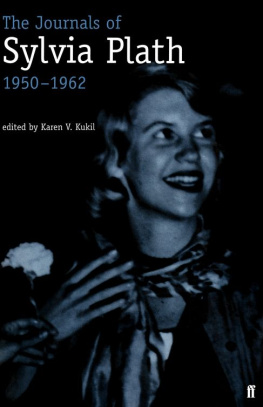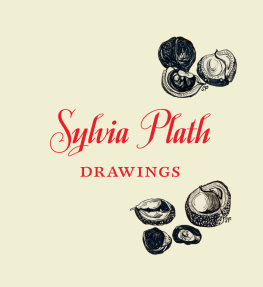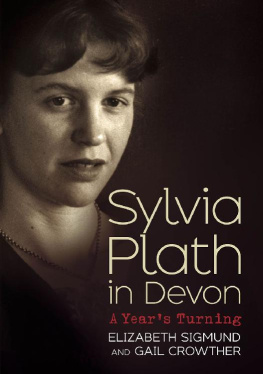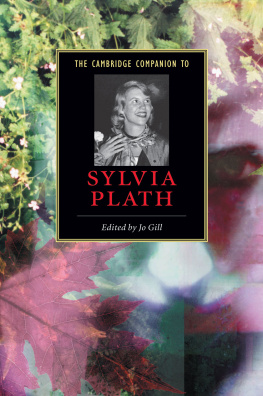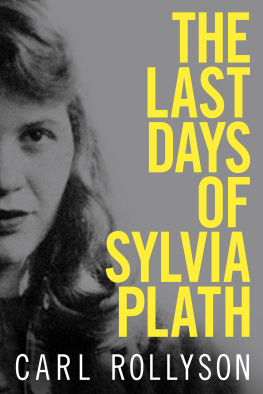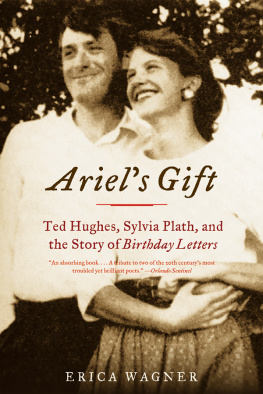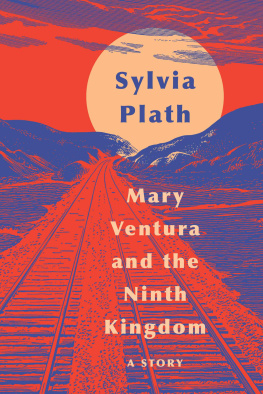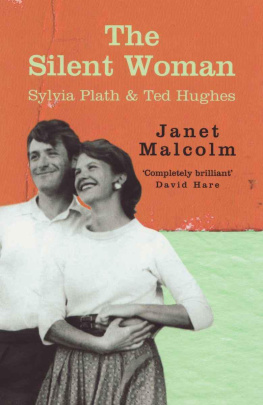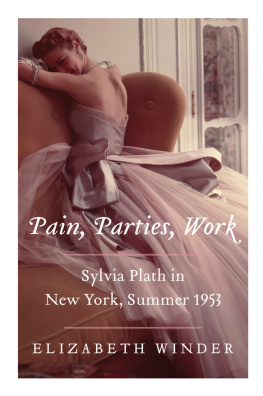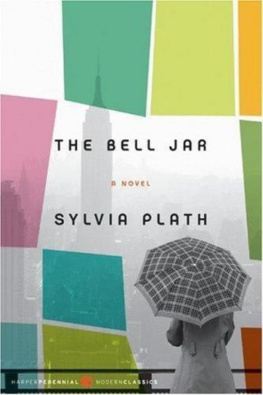
Thank you for purchasing this Scribner eBook.
Join our mailing list and get updates on new releases, deals, bonus content and other great books from Scribner and Simon & Schuster.
C LICK H ERE T O S IGN U P
or visit us online to sign up at
eBookNews.SimonandSchuster.com

Contents
To M.F.
Introduction
On February 25, 1956, twenty-three-year-old Sylvia Plath stepped into a roomful of people and immediately spotted what she later described in her diary as a big, dark, hunky boy. She asked her companions if anyone knew the name of this young man but she received no answer. The party was in full swing and the free-form rhythms of the jazzthe syncopated strut of the piano, the seductive siren call of the trumpetmade conversation difficult. In fact, the alcohol had had the opposite effect; as she had been walking to the party she had found herself so inebriated that she had kept banging into trees.
On arrival at the Womens Unionthe venue in Falcon Yard chosen to celebrate the first issue of the slim student-made literary journal the St. Botolphs Review Sylvia saw that the room was packed with young men in turtleneck sweaters and women in elegant black dresses. Counterpointing the jazz, the sound of poetry was in the air: great chunks of it being quoted back and forth like rallies in a game of literary dominance and seduction.
Sylvia was in a bullish mood that night. One of the contributors to St. Botolphs Review , Daniel Huws, had sneered at two of her poems that had appeared in another Cambridge literary magazine, dismissing her work as too polished and well made. Quaint and electric artfulness, he had written in Broadsheet. My better half tells me Fraud,
By this point, Sylvia had knocked back another drink, emptying its contents into her mouth, down her hands, and onto the floor. She then tried to dance the twist with Myers and, although her movements may well have been less than smooth, her memory was razor sharp. As she danced, she proceeded to recite the whole of Myerss poem Fools Encountered, which she had read for the first time earlier that day in St. Botolphs Review .
Plath recorded this encounternow one of the most famous in
Hughes left his mark on Plath and her reputation too. After her suicide, in February 1963, as her estranged, but not divorced, husband, he became Plaths literary executor, the guardian of her writings and, in effect, responsible for how she was perceived. A great deal has been written about the way Plaths posthumous journals were edited; since they were first published in abridged form in 1982, questions have been raised about Hughess influence and motivation. At what point did editorializing (the understandable deletion of information because of repetition or legal problems) mutate into the altogether more sinister act of censorship? What part did he take in excising certain sensitive
Sylvia viewed Ted as something of a colossus, and to this day his enormous shadow obscures many aspects of Plaths life and work. The sensational aspects of the Plath-Hughes relationship (from that intense first meeting, through to their marriage only four months later, to the birth of their children, followed by Teds infidelity, their separation, and then Sylvias death at the age of thirty) have dominated the cultural landscape to such an extent that their story has taken on the resonance of a modern myth. In addition, Hughess determination to market Ariel a volume of poetry that was published in 1965, three years after Plaths deathas the crowning glory of her poetical career has caused her other work to be marginalized. In Hughess view, the poetry she wrote toward the end of her life was the most important; anything that came before was a mere dress rehearsal. Stories, letters, journal entries, poemshundreds of themwere nothing more than impurities, by-products of a process of transformation.
The implication is clear. Plath, as a poet (perhaps even as a woman), did not existso the argument goesbefore she created these late poems. During the process of crafting them, she finally becomes, in the words of Robert Lowell, who wrote the introduction to the American edition of Ariel (published in 1966), herself.
Lowells essay set the tone for Plath studies for the rest of the twentieth century. In writing Ariel , Plath becomes something imaginary, newly, wildly and subtly createdhardly a person at all, or a woman, certainly not another poetess, but one of those super-real, hypnotic, great classical heroines... The voice is now coolly amused, witty, now sour, now fanciful, girlish, charming, now sinking to the strident rasp of the vampirea Dido, Phaedra, or Medea. The work is distinct
It is one thing for Hughes to argue that the writing that came before Ariel was a product of Plaths lesser and artificial selves and quite another to believe that her mature work only began in 1956. Yet in his introduction to Plaths Collected Poems , this is the date that Hughes gives as the year in which Plath started to move away from the juvenilia he associates with her early years. It also happens to be the year in which the couple met.
Hughes, in his role of editor, chose to confine a selection of fifty poems written before 1956 to a small section at the end of the volume, a gesture that almost feels like an apology or an afterthought. Defending his decision, Hughes said that Plath, had she lived, would have rejected these poems. Yet in the same paragraph, he added a number of reasons why he decided to include fifty of them in the Collected Poems . At their very best, he said, they possessed a lyrical quality that rivaled the poems she wrote later in life. They also showed, he added, traces of the super-charged system of inner symbols and images, that made up her creative universe.
There is only one problem: the list is far from complete. One of the missing poems is her 1953 villanelle Mad Girls Love Song, which Plath described as one of her favorites.
The Mike she refers to is Myron Lotz, one of a myriad of Plaths early boyfriends who, over the years, have been obscured by the dark, hunky presence of Ted Hughes. Yet these menfigures who have not been explored in any depth in any previous biographyinfluenced and shaped both Plaths life and her work in a way that has not been fully appreciated. Although Hughes was her husband (as he once described himself in the third person), These men inspired both her poetryfor instance, Gordon Lameyer, who was unofficially engaged to Plath in August 1954, was the source of Sonnet for a Green-Eyed Sailorand her prose: she regurgitated her toxic feelings for boyfriend Dick Norton by penning a vicious portrait of him as the unimaginative Buddy Willard in her autobiographical novel The Bell Jar.
Dick Norton (whom Plath dated between 1951 and 1953) became a symbol of everything Plath hated about the American hypocritical attitude toward sex. In an unpublished letter she wrote to her friend Ann Davidow in January 1952, Plath talks of her anger at learning that Dick was not a virgin (after pretending he had been). In the letter, she outlines how she did not object from a moral point of view but because she wished she could have enjoyed the same pleasures herself.
Sexor rather the constraints and repressions surrounding itplayed a central role in Plaths creative and psychological development. She realized, as she wrote in her journal in the autumn of 1950, she was too well brought up to disregard tradition, yet she hated boys who could express themselves sexually while she had no choice but to drag herself from one date to the next in soggy desire. The system, she added, disgusted her.
Next page

